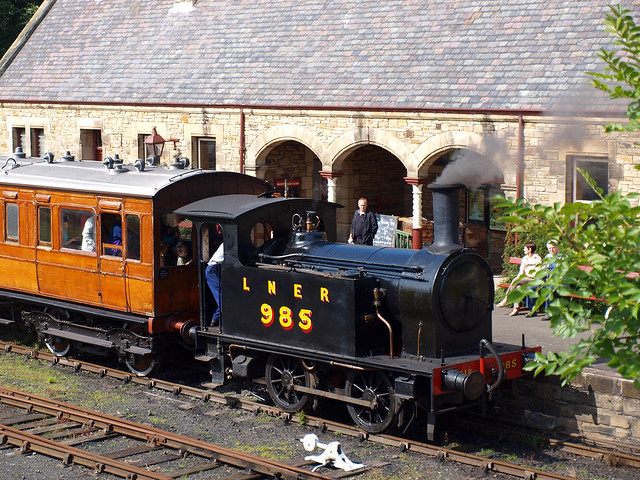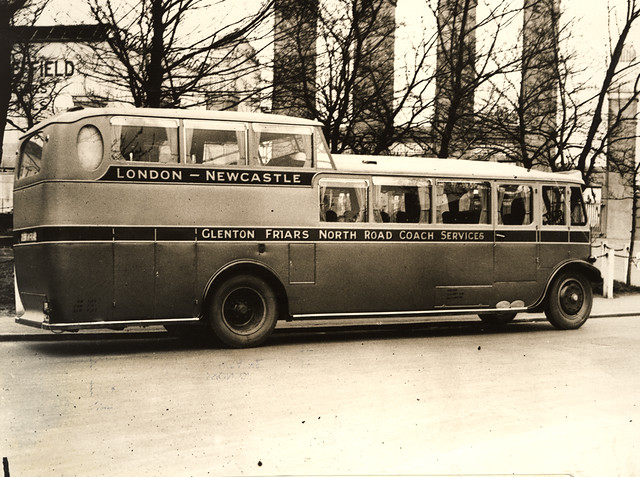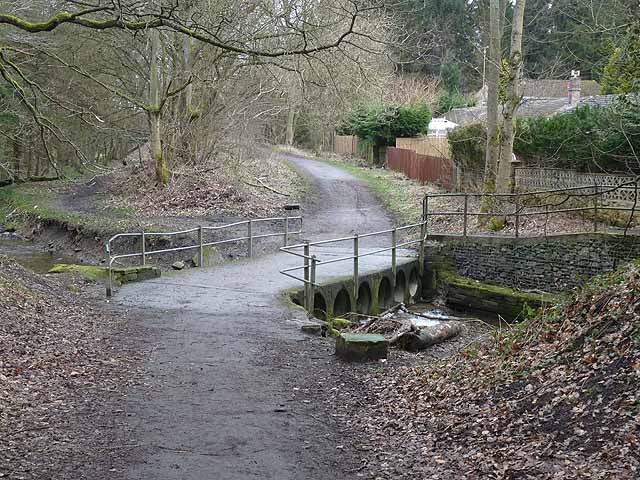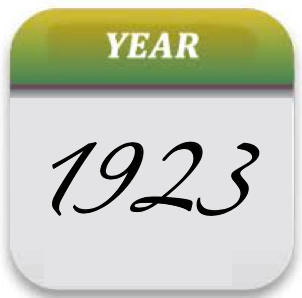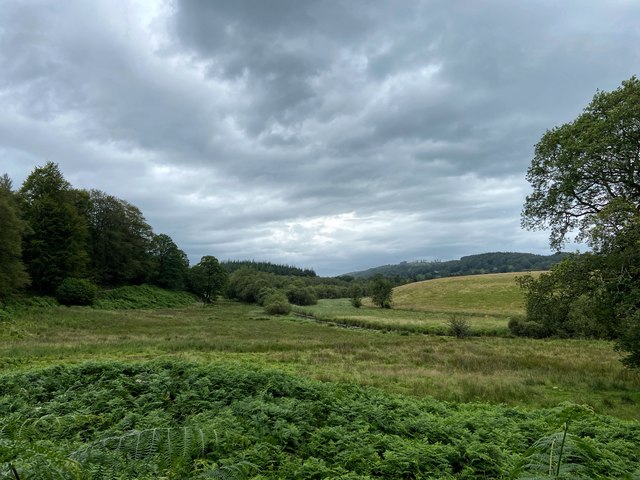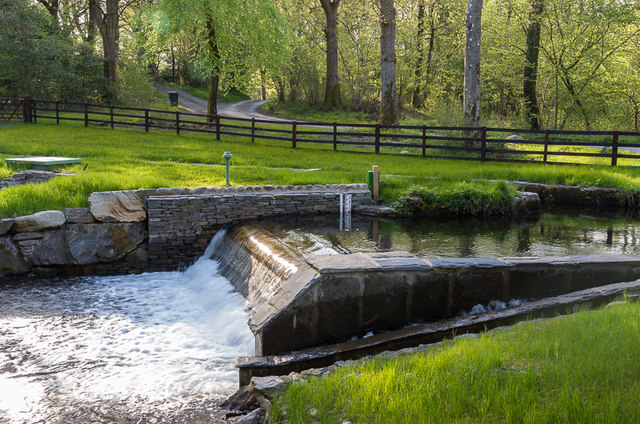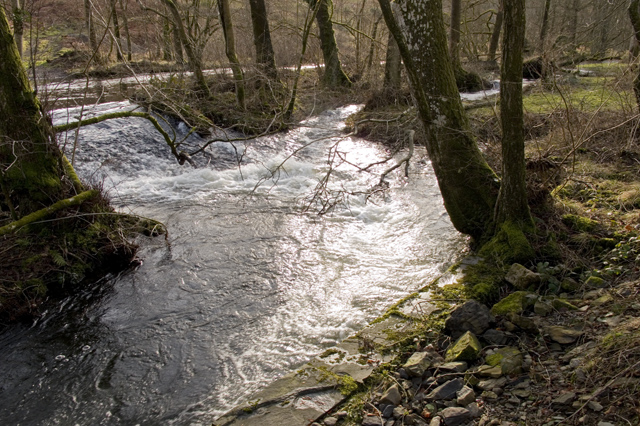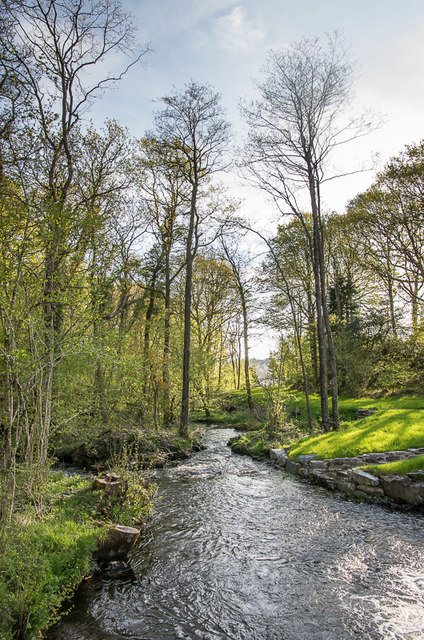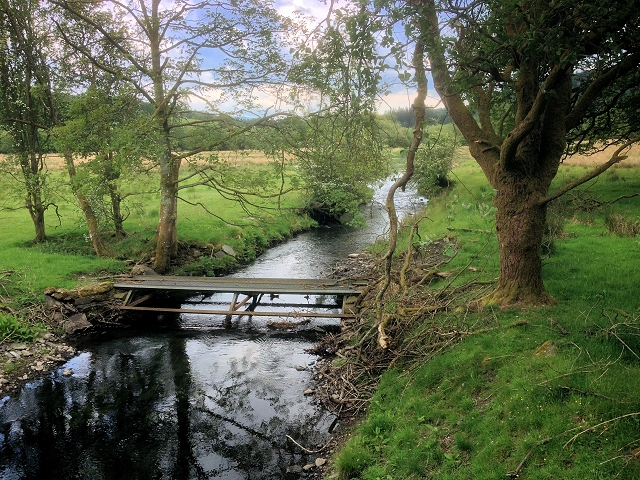Topics > Transport and Travel > Railway > London and North Eastern Railway (LNER)
London and North Eastern Railway (LNER)
The London and North Eastern Railway (LNER) was created by the Railways Act 1921. It amalgamated seven major railways: Great Eastern Railway, Great Central Railway, Great Northern Railway, Great North of Scotland Railway, Hull and Barnsley Railway, North British Railway, & North Eastern Railway (NER). The routes of the new company covered 6,590 miles (of which 1,757 miles had been NER). LNER operated from the 1st of January 1923 until nationalisation on the 1st of January 1948.
The London and North Eastern Railway (LNER) was the second largest (after LMS) of the "Big Four" railway companies created by the Railways Act 1921 in Britain. It operated from 1 January 1923 until nationalisation on 1 January 1948. At that time, it was divided into the new British Railways' Eastern Region, North Eastern Region, and partially the Scottish Region.
History
The company was the second largest created by the Railways Act 1921. The principal constituents of the LNER were:
- Great Eastern Railway
- Great Central Railway
- Great Northern Railway
- Great North of Scotland Railway
- Hull and Barnsley Railway
- North British Railway
- North Eastern Railway
The total route mileage was 6,590 miles (10,610 km). The North Eastern Railway had the largest route mileage of 1,757 miles (2,828 km), whilst the Hull and Barnsley Railway was 106.5 miles (171.4 km).
It covered the area north and east of London. It included the East Coast Main Line from London to Edinburgh via York and Newcastle upon Tyne and the routes from Edinburgh to Aberdeen and Inverness. Most of the country east of the Pennines was within its purview, including East Anglia. The main workshops were in Doncaster, with others at Darlington, Inverurie and Stratford, London.
The LNER inherited four of London's termini: (ex-London and Blackwall Railway; King's Cross (ex-Great Northern Railway); (ex-Great Eastern Railway); and (ex-Great Central Railway). In addition, it ran suburban services to (London, Midland and Scottish Railway) and (Metropolitan Railway, later London Transport).
The LNER owned:
- 7,700 locomotives, 20,000 coaching vehicles, 29,700 freight vehicles, 140 items of electric rolling stock, 6 electric locomotives and 10 rail motor cars
- 6 turbine and 36 other steamers, and river boats and lake steamers, etc.
In partnership with the London, Midland and Scottish Railway (LMS), the LNER was co-owner of the Midland and Great Northern Joint Railway, the UK's biggest joint railway, much of which competed with the LNER's own lines. The M&GNJR was incorporated into the LNER in 1936. In 1933, on the formation of the London Passenger Transport Board, the LNER acquired the remaining operations of the Metropolitan Railway Company.
The LNER was the majority partner in the Cheshire Lines Committee and the Forth Bridge Railway Company.
It depended on freight from heavy industry in Yorkshire, the north east of England and Scotland, and its revenue was reduced by the economic depression for much of the early part of its existence. In a bid to improve financial efficiency, staffing levels reduced from 207,500 in 1924 to 175,800 in 1937. For investment to retain freight traffic, new marshalling yards were built in Whitemoor in Cambridgeshire, and Hull in Yorkshire to attempt to retain freight traffic.
Sir Ralph Wedgwood introduced a Traffic Apprenticeship Scheme to attract graduates, train young managers and provide supervision by assistant general manager Robert Bell for career planning. The company adopted a regional managerial system, with general managers based in London, York and Edinburgh, and for a short time, Aberdeen.
For passenger services, Sir Nigel Gresley, the Chief Mechanical Engineer built new powerful locomotives and new coaches. Later developments such as the streamlined Silver Jubilee train of 1935 were exploited by the LNER publicity department, and embedded the non-stop London to Edinburgh services such as the Flying Scotsman in the public imagination. The crowning glory of this time was the world record speed of achieved on a test run by LNER Class A4 4468 Mallard.
In 1929, the LNER chose the typeface Gill Sans as the standard typeface for the company. Soon it appeared on every facet of the company's identity, from metal locomotive nameplates and hand-painted station signage to printed restaurant car menus, timetables and advertising posters. The LNER promoted their rebranding by offering Eric Gill a footplate ride on the Flying Scotsman express service; he also painted for it a signboard in the style of Gill Sans, which survives in the collection of the St Bride Library. Gill Sans was retained by the Railway Executive in 1949 and was the official typeface until British Rail replaced it in the mid 1960s with Rail Alphabet.
Continental shipping services were provided from Harwich Parkeston Quay.
The company took up the offer in 1933 of government loans at low interest rates and electrified the lines from Manchester to Sheffield and Wath yard, and also commuter lines in the London suburban area.
Ancillary activities
The LNER inherited:
- 8 canals, including the Ashton, Chesterfield, Macclesfield, Nottingham & Grantham, Peak Forest
- Docks and harbours in 20 locations, including Grimsby, Hartlepool, Hull, Immingham, Middlesbrough, some eastern Scottish ports, Harwich, Lowestoft and London
- Other wharves, staithes, piers
- 2 electric tramways
- 23 hotels (20 of them were nationalised in 1948 as British Transport Hotels. Of the other three,[17] Cruden Bay Hotel was requisitioned in 1940, Palace Hotel, Aberdeen caught fire in 1941 and the Yarborough Hotel, New Holland was sold, being advertised for sale in 1947.)
- A 49% stake in the haulage firm Mutter, Howey & Co. Ltd.
It took shares in a large number of bus companies, including for a time a majority stake in United Automobile Services Ltd. In Halifax and Sheffield, it participated in Joint Omnibus Committees with the LMS and the Corporation.
In 1935, with the LMS, Wilson Line of Hull and others it formed the shipping company Associated Humber Lines Ltd.
In 1938 it was reported that the LNER, with 800 mechanical horse tractors, was the world's largest owner of this vehicle type.
Ships
The LNER operated a number of ships.
| Ship | Launched | Tonnage (GRT) |
Notes and references |
|---|---|---|---|
| SS Accrington | 1910 | 1,629 | Built for the Great Central Railway and served on the Grimsby – Hamburg, Germany route. Acquired by LNER in 1923 and passed to Associated Humber Lines in 1934. From July 1942 used as a convoy rescue ship in the Second World War and completed 40 escort voyages. Returned to LNER post-war and in 1946, with her sister Dewsbury, was transferred to Harwich to replace war losses. Passed to British Railways in 1948. Served until scrapped in 1951 mainly on the Harwich – Antwerp route.[20][21] |
| SS Amsterdam | 1894 | 1,745 | Built for the Great Eastern Railway. Served on the Harwich–Hook of Holland, Netherlands route until 1910 when she transferred to Harwich – Antwerp service. Acquired by LNER in 1923 and served until scrapped in 1928.[22][23] |
| SS Amsterdam | 1930 | 4,220 | Built by John Brown and Company of Clydebank for use on the Harwich – Hook of Holland service. A sister of Vienna and Prague. Sold in 1941 to the Ministry of War Transport and converted to a troopship. In 1944, she struck a mine and sank off Normandy, France.[24][25] |
| RMS Antwerp | 1919 | 2,957 | Built for the Great Eastern Railway. Acquired by LNER in 1923 and operated on the Harwich – Antwerp service. The vessel was returned to the LNER in 1945 and fitted out as a troopship. Passed to British Railways in 1948 and served until scrapped in 1951 carrying troops between Harwich and Hook of Holland.[22][26] |
| SS Archangel | 1910 | 2,570 | Built as St. Petersburg for the Great Eastern Railway. Renamed Archangel in 1916 and acquired by LNER in 1923. Bombed and sunk on 16 May 1941 off the East coast of Scotland.[22] |
| SS Arnhem | 1946 | 4,891 | Built by John Brown and Company at Clydebank for use on the Harwich – Hook of Holland route. She was the company's first oil burner. Passed to British Railways in 1948 and served on the Hook of Holland route with her near sister Amsterdam [of 1950] until withdrawn in April 1968. Attempts to sell the vessel failed and she was scrapped in 1969.[24][27] |
| SS City of Bradford | 1903 | 1,340 | Built by Earle's Shipbuilding for the Great Central Railway. Made her maiden voyage to Rotterdam before transferring to Scandinavian routes, eventually taking up service on the Grimsby – Hamburg route for which she was designed. In 1914 on passage to Hamburg and being unaware of the outbreak of war, she was intercepted off Heligoland and taken as a prize. Renamed Donau she was recovered by British forces in January 1919 and returned to Grimsby. Acquired by LNER in 1923, she was transferred to Associated Humber Lines in 1935 but found to be surplus to requirements. Sold in 1936 to the Near East Shipping Co, London and renamed Hanne. The vessel was bombed and sunk off Malta in February 1942.[20][28] |
| SS City of Leeds | 1903 | 1,341 | Built by Earle's Shipbuilding for the Great Central Railway. A sister of City of Bradford, for service on the Grimsby – Hamburg route. Was in Hamburg when war broke out in 1914 and was taken as a 'seized prize'. She was recovered in early 1919 and towed to Grimsby, where she was refurbished entering service to Rotterdam pending resumption of the Hamburg service. Acquired by LNER in 1923, and with her sister was transferred to Associated Humber Lines in 1935 but was also found to be surplus to requirements. The vessel was sold and scrapped in 1936 at Blyth, Northumberland.[20][29] |
| SS Dewsbury | 1910 | 1,631 | Built for the Great Central Railway for service on the Grimsby–Hamburg route. The first vessel in a series of five sister ships which were all built by Earle's Shipbuilding at Hull. Acquired by LNER in 1923. Passed to Associated Humber Lines in 1934 and was converted to a Convoy Escort Vessel in the war. She returned to service post-war in late 1945 on the Harwich – Antwerp route with sister vessel Accrington replacing tonnage lost in the war by the Harwich fleet. Passed to British Railways in 1948 she was finally withdrawn from service in January 1959 and was scrapped in May of that year.[20][30] |
| SS Lutterworth | 1891 | 1,002 | Built by Earle's Shipbuilding of Hull, a sister of the Nottingham,Staveley and Leicester, for the Manchester, Sheffield and Lincolnshire Railway, who later became the Great Central Railway in 1897. Entered service from Grimsby to Hamburg. Acquired by LNER in 1923. Served until 1932 when she sold to British and Irish Steam Packet Company and was scrapped the following year.[20][31] |
| SS Macclesfield | 1914 | 1,018 | Built by Swan Hunter at Newcastle upon Tyne for the Great Central Railway. Remained in commercial service in the war mainly serving the Netherlands. Resumed Grimsby – Antwerp service in 1919 and acquired by LNER in 1923. Transferred to Associated Humber Lines in 1935. Resumed service in 1945 between Goole or Hull to Antwerp or Rotterdam. Passed to British Railways in 1948 and served until scrapped in 1958.[20][32] |
| SS Malines | 1921 | 2,969 | Built for the Great Eastern Railway by Armstrong Whitworth at Newcastle, for service on the Harwich – Antwerp route. Acquired by LNER in 1923 but was torpedoed and sunk off Port Said in 1942. Having been raised and towed back in 1945 to her builders, the level of engine damage led to her being laid up and she was eventually scrapped in 1948.[22][33] |
| SS Nottingham | 1891 | 1,033 | Built by Swan Hunter for the Manchester, Sheffield and Lincolnshire Railway who later became the Great Central Railway in 1897. Entered service when delivered with her sisters Lutterworth and Staveley on the Grimsby – Hamburg route, but transferred to Grimsby – Rotterdam in 1897. The vessel served as a naval supply vessel between 1915 and 1918 and changed her name to HMS Notts. Following refurbishment in 1919 she re-entered commercial service returning to her original name of Nottingham. Acquired by LNER in 1923 and served until scrapped in 1935.[20][31] |
| SS Prague | 1929 | 4,220 | Built by John Brown and Company at Clydebank, a sister of Vienna and Amsterdam, for use on the Harwich – Hook of Holland route. Sold in 1941 to the Ministry of War Transport and converted to a troopship. Returned to LNER in 1945 and re-opened the Hook of Holland service but in a spartan condition and without her running mates; the Amsterdam was a war loss and the Vienna retained as a troopship by the Ministry of War Transport. Upon arrival of the new-built Arnhem in 1947, she was sent for an overdue refurbishment but was gutted by fire and sank whilst at the shipyard. She was raised and towed to Barrow in September 1947 where she was broken up.[24][25] |
| SS Roulers | 1894 | 1,753 | Built by Earle's Shipbuilding in Hull as Vienna for the Great Eastern Railway, and entered service with her sisters Amsterdam and Berlin on the Harwich – Hook of Holland route. Renamed Roulers in 1920. Acquired by LNER in 1923 and served on the Harwich–Zeebrugge route until withdrawn and scrapped in 1930.[22][23] |
| SS Staveley | 1891 | 1,034 | Built by Swan Hunter at Newcastle upon Tyne for the Manchester, Sheffield and Lincolnshire Railway which became the Great Central Railway in 1897. Entered service with her sisters Nottingham and Lutterworth on the Grimsby – Hamburg route. Acquired by LNER in 1923 and continued in service until sold to the British and Irish Steam Packet Company in 1932. She was scrapped a year later by Thos.W.Ward at Preston.[20][31] |
| SS St Denis | 1908 | 2,570 | Built by John Brown and Company at Clydebank as Munich for the Great Eastern Railway for service on the Harwich – Hook of Holland route. Requisitioned in the First World War for use as a hospital ship and renamed St Denis. Acquired by LNER in 1923 and continued to serve the Hook of Holland route until 1932 when she was relegated to summer secondary services by new buildings on the Hook route. She was employed in evacuation duties at Amsterdam in 1940 when she became trapped and was scuttled. Salvaged by the Germans and served until scrapped in 1950, having been renamed twice as Skorpion and Barbara in the interim.[22][34] |
| MV Suffolk Ferry | 1947 | 3,138 | Built by John Brown and Company at Clydebank. Passed to British Railways in 1948, withdrawn 1980 and scrapped in 1981. |
| SS Train Ferry No. 1 | 1917 | 2,683 | Built by Armstrong Whitworth in Newcastle upon Tyne for use between Richborough, Kent and Dunkirk, France. Laid up post-war. Acquired by LNER in 1923 and in April 1924 opened the Harwich–Zeebrugge, Belgium train ferry route with her sister vessels. Requisitioned in 1940 by the Royal Navy and renamed HMS Princess Iris and converted in 1941 to a Landing Craft carrier. Returned to LNER in 1946 and renamed SS Essex Ferry. Following refurbishment at John Brown and Company at Clydebank, she re-opened the Harwich – Zeebrugge service. Passed to British Railways in 1948 she was renamed SS Essex Ferry II in 1957, when they took delivery of a new train ferry of the same name. She was withdrawn from service and scrapped at Grays, Essex in that year.[24][35] |
| SS Train Ferry No. 2 | 1917 | 2,678 | Built by Armstrong Whitworth at Newcastle upon Tyne for use between Richborough, and Dunquerque. Laid up post-war. Acquired by LNER in 1923 and in 1924 opened the Harwich –Zeebrugge train ferry service with her two sisters. Requisitioned in 1940 by the Royal Navy she was lost on 13 June 1940 off Saint-Valery-en-Caux, Seine Maritime, France. |
| SS Train Ferry No. 3 | 1917 | 2,672 | Built by Fairfields of Glasgow for use between Richborough, and Dunquerque. Laid up post-war. Acquired by LNER in 1923 and opened the Harwich – Zeebrugge train ferry route in 1924. Requisitioned in 1940 by the Royal Navy. Renamed HMS Daffodil and converted in 1941 to a Landing Craft carrier. Lost off Dieppe, Seine-Maritime, on 18 March 1945. |
| SS Vienna | 1929 | 4,227 | Built by John Brown and Company at Clydebank for the Harwich – Hook of Holland route, the first of three sister vessels. In 1932 she had modifications carried out including an extension to her promenade deck and inaugurated a programme of short summer cruises to the near continent which were to become very successful and which continued until 1939. In this pre-war period she was considered the pride of the Harwich fleet. Sold in 1941 to the Ministry of War Transport and converted to a troopship. Post-war the vessel operated under LNER/BR management as a leave ship for the British Army of the Rhine with services from Harwich – Hook of Holland and Tilbury – Ostend. She was based at Harwich in that period where she suffered an engine room explosion in February 1952 which killed two crew members. She was withdrawn from service in June 1960 and scrapped later that year in Belgium. |
Liveries
The most common liveries were lined apple green on passenger locomotives (much lighter and brighter than the green used by the Great Western Railway) and unlined black on freight locomotives, both with gold lettering. Passenger carriages were generally varnished teak (wood) finish; the few metal-panelled coaches were painted to represent teak.
Some special trains and A4 Pacific locomotives were painted differently, including silver-grey and garter blue.
Advertising
The LNER covered quite an extensive area of Britain, from London through East Anglia, the East Midlands and Yorkshire to the north east of England and Scotland. The 1923 grouping meant that former rivals within the LNER had to work together. The task of creating an instantly recognisable public image went to William M. Teasdale, the first advertising manager. Teasdale was influenced by the philosophies and policies of Frank Pick, who controlled the style and content of the London Underground's widely acclaimed poster advertising. Teasdale did not confine his artists within strict guidelines but allowed them a free hand. William Barribal designed a series of bold Art Deco posters in the 1920s and 1930s. When Teasdale was promoted to Assistant General Manager, this philosophy was carried on by Cecil Dandridge who succeeded him and was the Advertising Manager until nationalisation in 1948. Dandridge was largely responsible for the adoption of the Gill Sans typeface, later adopted by British Railways.
The LNER was a very industrial company: hauling more than a third of Britain's coal, it derived two thirds of its income from freight. Despite this, the main image presented was one of glamour, of fast trains and sophisticated destinations. Advertising was highly sophisticated and advanced compared with those of its rivals. Teasdale and Dandridge commissioned top graphic designers and poster artists such as Tom Purvis to promote its services and encourage the public to visit the holiday destinations of the east coast in the summer.
Chief office holders
Chairmen of the Board
- William Whitelaw 1923 - 1938
- Sir Ronald Matthews 1938 - 1948
Chief General Managers
- Sir Ralph Wedgwood 1923 - 1939
- Charles Henry Newton 1939[40] - 1947
- Miles Beevor 1947 - 1948 (acting)
Chief mechanical engineers
- Sir Nigel Gresley was the first CME and held the post for most of the LNER's existence, and thus he had the greatest effect on the company. He came to the LNER via the Great Northern Railway, where he was CME. He was noted for his "Big Engine" policy, and is best remembered for his large express passenger locomotives, many times the holder of the world speed record for steam locomotives. LNER Class A4 4-6-2 Pacific locomotive Mallard holds the record to this day. Gresley died in office in 1941.
- Edward Thompson's short reign (1941–1946) was a controversial one. A noted detractor of Gresley even before his elevation to the post of CME, there are those who interpret many of his actions as being motivated by dislike of his predecessor. Against this Gresley's designs had their flaws as well as their brilliance. His record is best served by his solid and dependable freight and mixed-traffic locomotives built under and for wartime conditions. He retired in 1946.
- Arthur Peppercorn's career was cut short by nationalisation and he was CME for only 18 months. In this short period and in an atmosphere of reconstruction rather than great new endeavours, his only notable designs were the A1 and A2 Pacific express passenger locomotives, most completed after nationalisation. Peppercorn was a student and admirer of Gresley and his locomotives combined the classic lines of Gresley's with the reliability and solidity they never quite achieved.
Nationalisation
The company was nationalised in 1948 along with the rest of the railway companies of Great Britain to form British Railways. It continued to exist as a legal entity for nearly two more years, being formally wound up on 23 December 1949.
On the privatisation of British Rail in 1996, the franchise to run long distance express trains on the East Coast Main Line was won by Sea Containers Ltd, who named the new operating company Great North Eastern Railway (GNER), a name and initials deliberately chosen to echo the LNER.
However in May 2018, following the collapse of Virgin Trains East Coast it was announced that the company would be renationalised as London North Eastern Railway.
Cultural activities
During the 1930s, the LNER Musical Society comprised a number of amateur male-voice choirs, based at Doncaster, Leicester, Huddersfield, Peterborough, Selby and elsewhere, which annually combined for a performance in London under their musical director Leslie Woodgate.
Accidents
- On 13 February 1923, an express passenger train overran signals at Retford, Nottinghamshire and ran into the rear of a freight train. Three people were killed.
- On 23 December 1923, an express passenger train overran signals and collided with a light engine at Belford, Northumberland.
- On 28 July 1924, a passenger train overran signals and collided with another at Haymarket station, Edinburgh, Lothian. Five people were killed.
- On 12 May 1926, during the General Strike, an express passenger train was deliberately derailed south of Cramlington, Northumberland.
- On 7 August 1926, an electric multiple unit overran signals and collided with a freight train at Manors station, Newcastle upon Tyne, Northumberland. The accident was caused by the driver tying down the controller with a handkerchief. When he leant out of the train he struck an overbridge and was killed. The train continued moving until the collision.
- On 30 August 1926, a passenger train collided with a charabanc on a level crossing at Naworth, Cumberland due to errors by the crossing keeper and a lack of interlocking between the signals and gates. Nine people are killed.
- On 14 February 1927, two passenger trains collided head-on at Hull Paragon station, Yorkshire due to a signalman's error. Twelve people were killed and 24 were injured.
- On 27 February 1927, an express passenger train collided with a light engine at Penistone, Yorkshire due to a signalman's error.
- On 17 August 1928, a passenger train struck a lorry on a level crossing at Shepreth, Hertfordshire and derailed.
- Main article: Darlington rail crash
- On 27 June 1928, an excursion train collided with a parcels train that was being shunted at Darlington, County Durham. Twenty-five people were killed and 45 were injured.
- On 9 June 1929, a steam railcar overran signals and collided with an excursion train at Marshgate Junction, Doncaster, Yorkshire.
- On 4 October 1929, a freight train departed against a danger signal at Tottenham, London, and then stopped foul of a junction where the crew abandoned the locomotive. An express passenger train collided with it and derailed.
- On 17 January 1931, a newspaper train departed from Thorpe-le-Soken station, Essex against signals and collided head-on with a light engine at Great Holland. Two people were killed and two were seriously injured.
- On 27 May 1931, a passenger train overran signals and collided head-on with another at Fakenham East station, Norfolk. One person was killed and fifteen were injured.
- On 8 September 1933, a passenger train ran into wagons at Bowling, West Dunbartonshire due to a signalman's error. Five people were injured.
- In November 1934, a Class D16/2 locomotive derailed at Wormley, Hertfordshire when it collided with a lorry on a level crossing. Both engine crew were killed.
- On 15 June 1935, an express passenger train ran into the rear of another at Welwyn Garden City, Hertfordshire due to a signalman's error. Fourteen people were killed and 29 were injured.
- On 15 February 1937, a passenger train entered a curve at excessive speed and derailed at Sleaford North Junction, Lincolnshire. Four people were killed and sixteen were injured, one seriously.
- On 15 February 1937, a freight train derailed at Upton, Sleaford due to excessive speed on a curve. The train had been diverted due to the earlier derailment.
- On 6 March 1937, a passenger train derailed at Langrick, Lincolnshire due to the poor condition of the track.
- On 13 June 1937, an excursion train overran signals and was derailed by trap points south of Durham. Nine people were injured.
- On 26 January 1939, an empty fish train ran into the rear of a passenger train at Hatfield, Hertfordshire.
- On 1 June 1939, a passenger train collided with a lorry on an occupation crossing at Hilgay, Norfolk and was derailed.
- On 8 June 1939, a passenger train departed against a danger signal from Manchester Central station, Lancashire and collided with another passenger train. Several people were injured.
- On 10 February 1941, an express passenger train overran signals and ran into the rear of a passenger train at Harold Wood, Essex. Seven people were killed and seventeen were seriously injured.
- On 28 April 1941, a fire broke out on an express passenger train which was brought to a stand at Westborough, Lincolnshire. The rear three carriages were burnt out. Six people were killed and seven were injured. Among those killed were the two eldest children of Hubert Pierlot, the Prime Minister of the Belgian government in exile.
- On 2 June 1944, WD Austerity 2-8-0 locomotive No. 7337 was hauling a freight train which caught fire as it approached Soham, Cambridgeshire. The train comprised wagons carrying bombs. The train was divided behind the burning wagon, with the front portion being taken forward with the intention of isolating the wagon in open countryside. Its cargo detonated at Soham station, killing the fireman and the Soham signalman and injuring the trains' driver and guard. Soham station was severely damaged, but the line was re-opened within eighteen hours. For their actions, Benjamin Gimbert and James Nightall were awarded George Crosses.
- In July 1944, a passenger train was derailed at Pannal Junction by points that were half-open.
- On 5 January 1946, a freight train became divided on the East Coast Main Line in County Durham. The front section was brought to a stand but the rear section crashed into it. The wreckage fouled signal cables, giving a false clear signal to a passenger train on the opposite line which then crashed into the wreckage. Ten people were killed.
- On 10 February 1946, a passenger train crashed at Potters Bar, Hertfordshire due to a signalman's error. The wreckage fouled signal cables, giving a false clear to an express passenger train which then ran into the wreckage. A third passenger train then collided with the wreckage. Two people were killed.
- On 2 January 1947, a passenger train overran signals and ran into the rear of another at Gidea Park, Essex. Seven people were killed, 45 were hospitalised.
- On 9 August 1947, a passenger train ran into the rear of another at Darlington, County Durham due to a signalman's error. Twenty-one people were killed and 188 were injured.
- On 26 October 1947, an express passenger train entered a crossover at excessive speed and derailed at Goswick, Northumberland. Twenty-eight people were killed and 65 were injured.
Visit the page: London and North Eastern Railway for references and further details. You can contribute to this article on Wikipedia.

from https://commons.wikimedia.org…
(post '32) Logo of the London and North Eastern Railway comany, as used on uniforms and notices
- Image by Neb36 c/o Wikimedia Commons,available under the Creative Commons Attribution-Share Alike 3.0 Unported license.
Added by
Simon Cotterill
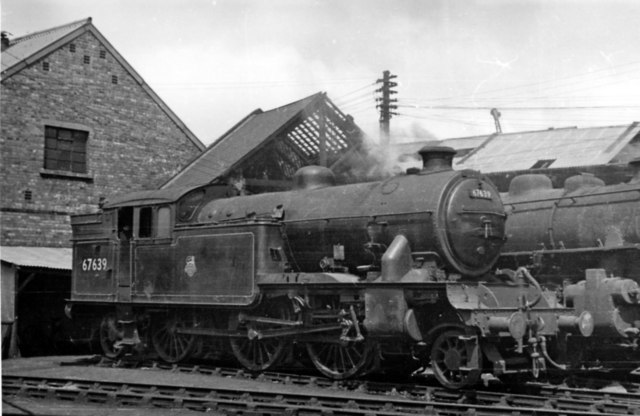
from Geograph (geograph)
LNER Gresley V1 2-6-2T at Middlesbrough Locomotive Depot
Pinned by Simon Cotterill

from https://en.wikipedia.org/wiki…
Front cover of the Autumn 1926 London and North Eastern Railways timetable
Added by
Simon Cotterill


from https://commons.wikimedia.org…
(post '32) Logo of the London and North Eastern Railway comany, as used on uniforms and notices
- Image by Neb36 c/o Wikimedia Commons,available under the Creative Commons Attribution-Share Alike 3.0 Unported license.
Added by
Simon Cotterill

from Geograph (geograph)
LNER Gresley V1 2-6-2T at Middlesbrough Locomotive Depot
Pinned by Simon Cotterill

from https://en.wikipedia.org/wiki…
Front cover of the Autumn 1926 London and North Eastern Railways timetable
Added by
Simon Cotterill


